
Plastic Recycling—One Chance in Twenty
Every year we manufacture an amount of plastic about equal to the weight of all the people on Earth. Plastic is designed to last for centuries, but most of it is used only once and thrown away. Only 5% of plastic is recycled in the US, by far the world’s foremost plastic-using nation.
Living with Leaches
Most plastics, if they existed in pure form and were properly disposed of, would pose little threat to the environment. But the reality is very different. Some of the monomers—the chains of chemical units that make up the plastic—are left unbound after the plastic is formed. The monomers in many plastics are known to cause cancer or birth defects. Tests on laboratory animals show reproductive harm from monomers at lower levels than found in the blood of an average person in an industrial nation.
Several thousand additives are used in plastic production to make the plastic more flexible or more rigid, to make it transparent, or more durable, and so on. In many cases such additives are the most hazardous substances in the plastic. As plastic ages or is exposed to sunlight and moisture, these additives leach into whatever is in the container, including food or drink, or into the surrounding environment. Three types of plastic additives are known to cause serious health problems:
- Phthalates. Phthalates make plastic less brittle. They are often found in cosmetics, packaging, cases for consumer electronics, and plastic upholstery. Phthalates easily find their way into the human body, and they are linked to reduced fertility, birth defects, and brain disorders in children. Some phthalates are banned from use in children’s toys, but they are still so common that they are present in 99% of people tested.
- BPA. Bisphenol-A, or BPA makes plastic tough. Plastic baby bottles were once a major source of BPA exposure for infants, but they’ve been banned in many countries. BPA-based material is currently used to line food and beverage cans to keep them from corroding. Indoor air is often found to contain small amounts of BPA. But because BPA is eliminated rapidly from the body, many experts believe it is not cause for general concern. On the other hand, young children have higher blood levels of BPA than adults, and we don’t know the effects of frequent daily exposure at low levels over many years, which is by far the most common situation.
- Dioxins. Polyvinyl chloride, or PVC, is strong and durable and is commonly used for pipes and building materials. But PVC is the worst plastic for health and the environment. It is almost impossible to recycle PVC, and it releases dioxins, a family of chemicals that can stay in the body for years. High doses are known to cause cancer. Low doses cause developmental defects in children such as cleft palates and retarded sexual development. Dioxins have also been linked to low birth weight, learning disabilities and behavioral problems. Dioxins are commonly found in breast milk.
In the US, the amount of water that would cost $1 if drawn from a tap would cost close to $1000 if bought in bottles. And most of these bottles end up in landfills and in the ocean.
Other Chemicals
In addition to these chemicals, over time some plastics will also leach out lead, cadmium and other heavy metals. Certain chemicals left in plastic from manufacturing, like copper chloride or methanol, are especially poisonous to marine life. PBDEs are flame retardants that were added to children’s sleepwear, furniture, and other products. Though most PBDEs have been banned or are being phased out, they are still widespread in the environment, and studies have linked them to a reduction in IQ in children.
Plastic Surgery
The greatest reduction in the use of plastics so far has come from regulating single-use bags for shopping.
The best way to deal with plastic pollution is to use less plastic. Using metal or glass to store food instead of plastic containers is a healthy choice. Major cities world-wide have banned the use of foam take-out containers. There is little need for single-use plastic water bottles, which in fact are often sold containing tap water. In the US, the amount of water that would cost $1 if drawn from a tap would cost close to $1,000 if bought in bottles. And most of these bottles end up in landfills and in the ocean.
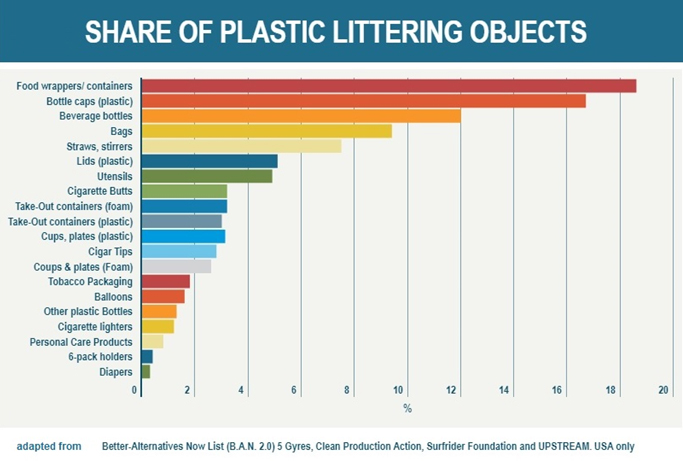

The greatest reduction in the use of plastics so far has come from regulating single-use bags for shopping. Fees or bans on their use have been passed around the world in response to public demand. Suffolk County in Long Island, NY, was suffering a blight of plastic bags on its famous beaches. The county passed a 5-cent fee on single-use bags and the following year saw a reduction of one billion bags used. Before California banned their use in 2016, 19 billion single-use plastic bags were distributed annually. Today that number is close to zero.
But the benefits of using other materials in place of plastic are not always straightforward. Replacing plastic bottles with glass would increase product weight and greatly increase the fuel needed for their transportation. Online giant Amazon has replaced many cardboard shipping containers with lightweight plastic; given the volumes of merchandise involved, the fuel savings and the reduction in greenhouse gas emissions are significant.
Plastic is not going away. It is too useful, and we have come rely on it. So, what about reusing it?
Curb Your PET

Individual action can make an important difference in the plastic problem. Recycling reduces litter and keeps microplastic from polluting land and sea. But the plastic symbol codes (“RIC”) are deceptive. Although they look like recycling symbols, they do not indicate that the plastic is recyclable. In reality, only #1 and #2 are recycled in any meaningful quantities by consumers—around 30% in the US, more in Europe. Overall, less than 10% of all plastic is recycled, and even this dismal number is misleading. The worst plastics in terms of health and the environment all end up in landfills, in the oceans, or in the air through incineration.
Without government subsidies, it would generally be unprofitable to recycle plastic at all.
High-numbered plastics used by consumers, #3 through #7, are recycled only in insignificant amounts or cannot be recycled at all. Plastic with food residue cannot be recycled (although some newer food containers can be composted). Do not include plastic bags in curbside pick-up unless your municipality expressly allows this. Although plastic bags are made of recyclable plastic, the thin sheets clog conventional recycling equipment. And black plastic, even labeled #1 or #2, is not recycled because laser scanners cannot sort it, and sorting by hand is prohibitively expensive.
Landfill or Litter
The low temperatures at which plastics melt is a major problem for recycling. While this lower temperature saves energy, it also allows contaminants to remain in the plastic mix and ruin its usefulness; such contaminants would be burned away at the higher temperatures involved in recycling glass or metal. Plastic can often only be recycled once or twice into a new product, and recycled plastic always contains a large percentage of fresh virgin resin to maintain its useful properties. After one or two cycles, it becomes waste.
Without government subsidies, it would generally be unprofitable to recycle plastic at all. “Styrofoam” is a good example of material that cannot be profitably recycled. The same qualities that make it an excellent packaging material – its light weight and resistance to compression—also make the cost of transporting it greater than could ever be recovered by reselling it. So it ends up as landfill or litter.
To encourage recycling many communities started single-bin curbside pickup so consumers do not need to sort their trash into separate bins. This greatly increased recycling but also increased contamination. And now, because of the oversupply of contaminated plastic from the US, China and other Asian countries that once recycled most plastic from industrial nations now accept only waste that is 99.5% free of contaminants. This has so harmed the US recycling industry that many recycling companies are facing bankruptcy.
Because plastic is so useful, we will continue manufacturing it in great quantities. But because it is now impractical to recycle most of it, we must find other means of recovery. The most promising possibilities include new types of plastic and new methods of recycling.
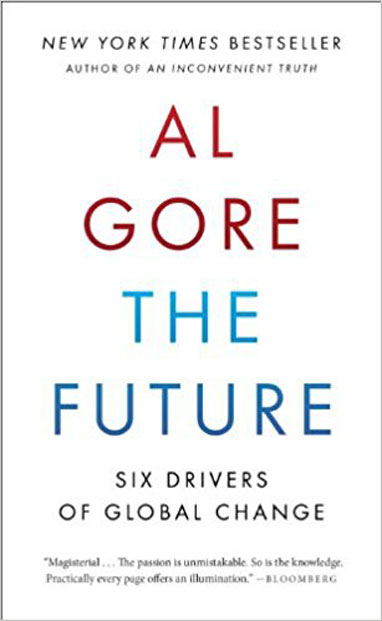
The Future
Six Drivers of Global Change
Al Gore
No period in global history resembles what humanity is about to experience. Explore the key global forces converging to create the complexity of change, our crisis of confidence in facing the options, and how we can take charge of our destiny.
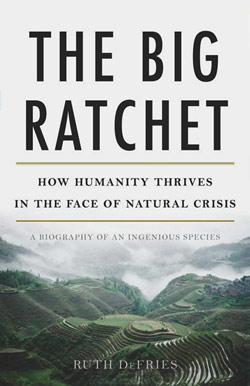
The Big Ratchet
How Humanity Thrives in the Face of Natural Crisis
Ruth DeFries
Human history can be viewed as a repeating spiral of ingenuity—ratchet (technological breakthrough), hatchet (resulting natural disaster), and pivot (inventing new solutions). Whether we can pivot effectively from the last Big Ratchet remains to be seen.
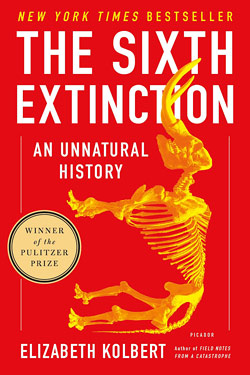
The Sixth Extinction
An Unnatural History
Elizabeth Kolbert
With all of Earth’s five mass extinctions, the climate changed faster than any species could adapt. The current extinction has the same random and rapid properties, but it’s unique in that it’s caused entirely by the actions of a single species—humans.
In the series: Our Plastic Earth
Related articles:
Further Reading »
External Stories and Videos
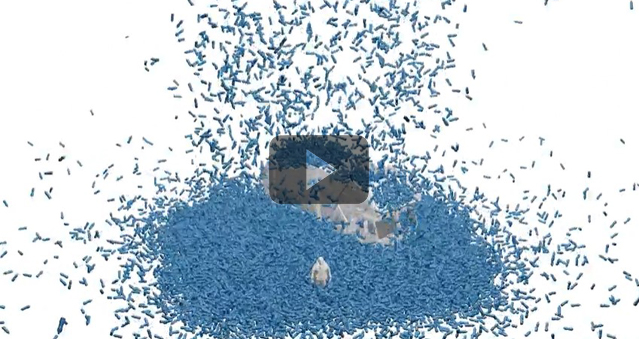
Watch: Since You Opened This Page … Drowning in Plastic – Visualizing the World’s Addiction to Plastic Bottles (Reuters)
It’s almost impossible to imagine the magnitude of waste created by our simple, everyday habits. This depiction of the plastic bottles we discard vividly demonstrates the extent of plastic refuse.
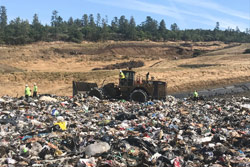
How Big Oil Misled the Public into Believing Plastic Would Be Recycled
NPR
It costs more to recycle most plastics than to dispose of it as garbage. The makers of plastic have known this all along, even as they spent millions of dollars telling the American public the opposite.
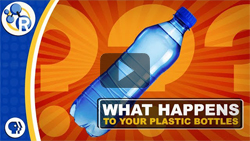
Watch: How Plastic Recycling Actually Works (PBS)
Learn the details of how plastic recycling is actually done—and why it’s so difficult to do effectively.
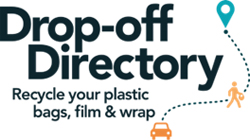
Dropoff Directory: Where You Can Recycle Your Plastic Bags, Film, and Wrap (BagandFilmRecycling.org)
Plastic bags, film, and wrap are not usually as easily recycled as other materials, but they often can be recycled, if you know where to take them.
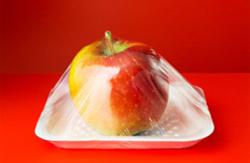
The Types of Plastics Families Should Avoid
Here’s what you need to know about how chemicals in plastics and other consumer products might affect your health and that of your family—and how you can lower your exposure.
